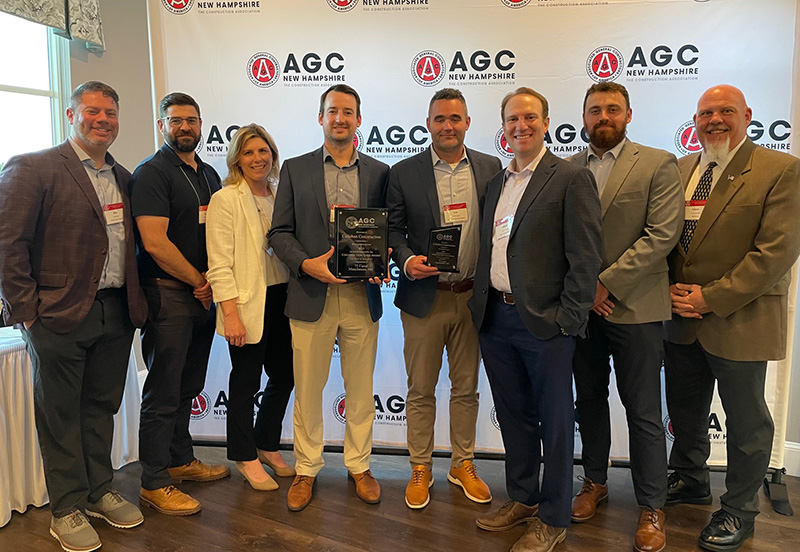News: Construction Design & Engineering
Posted: July 15, 2010
Applying reason to interior design There is a reason for everything - part 2
A previous article addressed the benefits of programming, the interior designer's focus on life safety, and the potential savings generated. This article will discuss the physical properties of the workplace, how they affect the health and comfort of the occupants, and how the interior designer is equipped to specify product that enhances the work environment and improves employee productivity.
Inappropriate or poorly placed lighting causes shadows and glare that can result in eye fatigue. Designers are well-versed in appropriate light levels for particular tasks and are able to specify fixtures that provide a comfortable amount of light. In addition to its scientific component, lighting is also an art and plays a key role in the perception of color and creation of ambience.
Inferior acoustics can usually be blamed for an environment that is noisy, making it difficult to concentrate or one that is absorbent or reverberant, making it difficult to hear. Awareness of the acoustical properties of ceiling, wall, and floor finishes and understanding the effect that various kinds of wall construction can have on acoustics, allows the designer to successfully control this aspect of an interior space.
Inadequate workstation design can cause many physical problems, including Carpal-tunnel syndrome, back, neck, and shoulder pain. These widespread but preventable symptoms are the cause of lost work time and costly repurchase of furniture. A well-designed workstation where keyboard height, monitor placement and chair position are carefully considered will help alleviate these complaints. Designers are familiar with anthropometrics (the size, proportions, and range of motion of the human body) and ergonomics (the relationship between human physiology and the physical environment). Interior designers regularly apply this knowledge to workstation and office design.
Poor indoor air quality caused by finishes containing high levels of volatile organic compounds (VOC's), new carpet and furniture that emit noxious chemicals, and improperly placed copiers are some of the reasons people suffer from respiratory symptoms and headaches in the workplace. The design industry has eliminated many of these chemicals from their manufacturing process and continues to improve the options for "greener" finishes and furniture. Designers who are LEED (Leadership in Energy and Environmental Design) certified, can guide their clients through the process of attaining LEED certification for their interiors project. Attaining certification improves working conditions for employees, realizes reduced energy costs, strengthens a building's image in an increasingly competitive market, and enhances a company's public image as a responsible environmental steward in the community.
Interior designers encourage recycling of building materials, look to the use of product that is manufactured locally and responsibly, and develop layouts that maximize the advantages of natural light. Including sustainable principles within workplace design not only improves working conditions, it offers options for staying within budget. For example: during construction many items within a building can be stored and reused; often acoustical ceiling tiles and carpet can be returned to manufacturers for recycling; the number of light fixtures can be reduced by using high performance fixtures. Fitting out spaces with demountable wall systems reduces the amount of hardwall construction that eventually finds its way to a land fill. This eliminates the required land fill tip and reduces construction time, labor, and material costs. Designated as furniture, demountable walls initial cost is offset by their depreciation value.
Color is a significant element in workplace design. It can influence mood, physical movement, even be responsible for loss of productivity. Color can be used to support corporate branding, to provide areas of focus, to create energy in areas of collaboration and induce calm in areas requiring concentration. It can separate areas by office function, be a directional tool that defines paths of travel, and act as a safety aid when applied along the edge of stair treads.
Just as there are benefits when color is used appropriately, there are negatives when it is applied without thought. Because the human eye needs stimulation, monochromatic areas can cause eye fatigue and headaches, possibly resulting in time loss. Conversely, too much contrast can result in overstimulation. Frequent dilation and contraction of the eye's pupil can produce similar results. Interior designers understand the significance of color and have the skill to apply it appropriately.
Using the principles and elements of design as a foundation, a good interior designer's primary goals are beauty, function, safety, and economy. A truly well designed space requires the thought, analysis, and collaboration of trained and experienced professionals. The benefits will be realized by all who are involved.
There is a reason for everything.
Linda Works, LEED AP, is an interior designer with Wessling Architects Inc., Quincy, Mass. Cheryl LaFond-Lewis co-authored this article.
MORE FROM Construction Design & Engineering
Nobis Group awards Robinson and Moreira STEM scholarships
Concord, NH Nobis Group, a 100% employee-owned consulting firm specializing in engineering and environmental solutions across the Northeast, has named the recipients of its 2025 STEM Scholarship: Andie Moreira of

Columns and Thought Leadership

Ask the Electrician: Is summer a prime time for commercial electrical maintenance?
The answer is “Yes!” While January marks the official new year, many businesses view September as a fresh start. This makes summer an ideal time for commercial property owners to schedule long-term electrical maintenance projects.

Careers in Construction Month focus on training and safety - by Joe Camilo
October is Careers in Construction Month, and rarely has it been more consequential. According to our chapter’s national parent organization, the construction industry needs to attract half-a-million new workers in the coming year to meet demand. Addressing that need is a huge job, but we at ABC MA are trying to do our part.

The rise of incubators and co-working spaces: The latest in life sciences - by Matt Combs
In recent years, the life science industry has witnessed a shift in how companies operate and innovate. One of the key driving forces behind this transformation is the emergence of incubators and co-working spaces specifically tailored to meet the unique budget and schedule needs of startups.

The design-build advantage: Integrated interior design solutions - by Parker Snyder
When it comes to corporate interior spaces for both commercial and industrial projects, partnering with a design-build firm with in-house interior design services can offer clients many benefits. Unlike traditional delivery methods where interior designers operate independently from the design and construction teams, often creating a longer project timeline as cost negotiations and revisions ensue







.png)